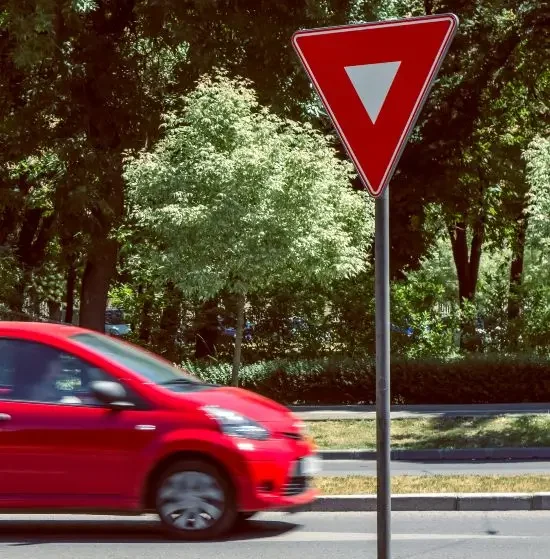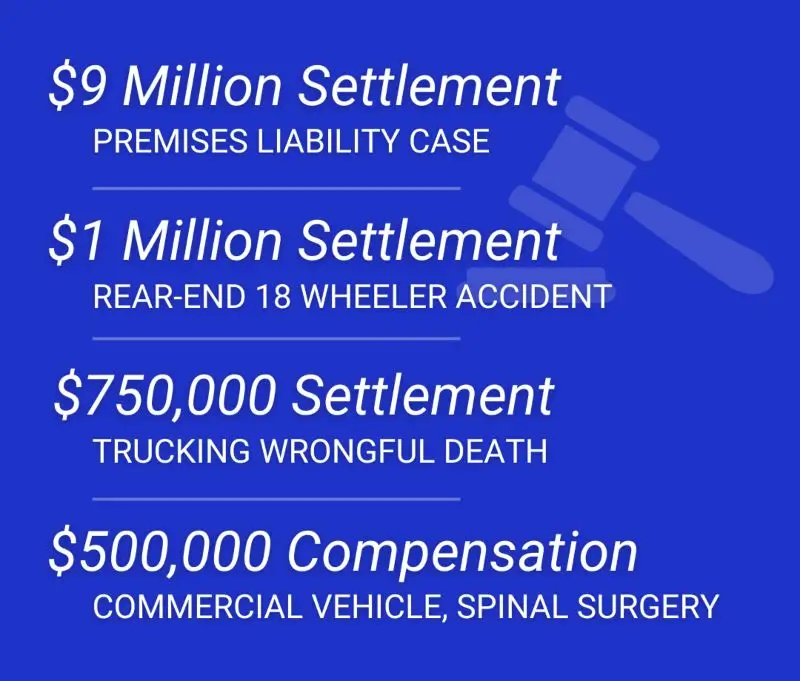Discover What Yielding the Right of Way Means in Houston
Navigating Texas roadways requires knowing when to yield the right of way. Yielding ensures a smooth traffic flow and prevents accidents by acknowledging who can proceed first. Failing to yield can result in disastrous consequences for drivers and pedestrians alike. Whether you’re driving in Houston, Bellaire, McAllen, Edinburg, Austin, Corpus Christi, or San Antonio, recognizing what yielding the right of way means is essential. By understanding yielding regulations, drivers can maintain safety and enjoy stress-free commutes, making Texas roads safer for everyone.
What Does Yielding the Right of Way Mean?
Yielding the right of way means allowing another person, vehicle, or pedestrian to proceed before you in traffic when laws or circumstances require it. This helps keep traffic smooth and reduces accidents. Drivers must yield at stop signs, uncontrolled intersections, and to pedestrians in crosswalks. When you turn left, you wait for oncoming traffic to pass. Always check for bicyclists and others sharing the road. Paying attention and yielding properly shows respect and promotes safety for everyone. Understanding these rules ensures you’re doing your part to follow the law and protect those around you.
When Should I Yield When Driving?
Knowing when to yield is essential for maintaining safety and avoiding collisions on the road. Yielding helps traffic flow smoothly and ensures everyone arrives at their destination safely. Paying attention to right-of-way rules shows respect for other drivers, cyclists, and pedestrians. Understanding these situations can prevent confusion and accidents at an intersection, approaching a pedestrian crossing, or merging onto a highway. Below are key instances where yielding is necessary to keep the roads safe for everyone:
- Intersections—When two vehicles arrive at a four-way stop simultaneously, the driver on the left should always yield to the one on the right. If you’re making a left turn at an intersection, yield to cars traveling straight through or turning right from the opposite direction. Always ensure the way is clear before proceeding.
- Pedestrian Crosswalks—Drivers must yield to pedestrians at marked or unmarked crosswalks at intersections. Slow down and stop if necessary to allow pedestrians to cross safely before continuing. Failing to yield can put pedestrians in danger.
- Merging onto Highways – When entering a highway, yield to vehicles already traveling in the lanes. Adjust your speed and merge carefully when there is an appropriate gap in traffic to avoid sudden stops or accidents.
- Emergency Vehicles – Always give the right-of-way to emergency vehicles using lights or sirens, no matter the traffic signal. Safely pull over to the right-hand side of the road to allow them to pass quickly and without obstruction.
- Driving in Roundabouts – At roundabouts, yield to any traffic circulating within the lane you plan to enter. Wait for a safe opportunity to merge and avoid cutting off other vehicles inside the roundabout.
Why Is It Important to Know Who Has the Right of Way?
Understanding the right-of-way rules is crucial for staying safe on the road and avoiding accidents that could result in serious injuries. These rules dictate which party has the legal authority to proceed in various traffic situations, from intersections to pedestrian crossings. A personal injury lawyer often helps resolve conflicts when drivers fail to apply these rules properly, leading to preventable yet impactful crashes. Knowing these guidelines ensures smooth traffic flow and greater accountability among all road users. Here are some additional reasons why it’s essential to know who has the right of way:
- Prevention of Accidents – Following right-of-way rules reduces traffic confusion and minimizes collision chances. Adhering to these principles promotes safer driving for everyone on the road.
- Legal Protection—Understanding and respecting the right of way helps you avoid legal complications. If an accident occurs, a personal injury lawyer can better represent you if you’ve acted in compliance with traffic laws.
- Improved Confidence While Driving—Awareness of right-of-way rules boosts a driver’s confidence in making decisions. It also fosters cooperation with other road users, creating a more predictable driving environment.
- Safety for Vulnerable Road Users—Pedestrians and cyclists rely on motorists to follow right-of-way rules, protecting those more at risk during traffic interactions.
Basic Rules to Know On the Road
Knowing who has the right of way makes all the difference in managing order on the road. Every driver is responsible for following right-of-way rules to prevent accidents and keep traffic moving smoothly. These rules ensure fairness and predictability in various driving situations, whether you’re navigating intersections, merging, or yielding to pedestrians. By remaining alert and adhering to these basic guidelines, drivers can avoid confusion and reduce the risk of collisions. Below are some key rules to keep in mind when determining who has the right of way:
- At Intersections With Stop Signs – The first car to reach the intersection should proceed first. If two vehicles arrive simultaneously, yield to the car on your right before moving forward safely.
- Right-of-Way When Turning Left – Always yield to oncoming traffic when turning left at an intersection. Wait until it’s clear and safe before completing your turn.
- Yielding to Pedestrians – Drivers must stop pedestrians crossing the street at marked crosswalks or intersections without traffic signals. Exercise caution and give pedestrians ample time to cross.
- Merging Into Traffic—When entering a highway or merging onto a new lane, yield to vehicles already in the lane. Adjust your speed to join the flow of traffic smoothly without disrupting it.
- Uncontrolled Intersections—Approach intersections without stop signs, traffic lights, or yield signs with caution. Yield to drivers on your right and proceed only when it’s safe.
Tips for Drivers in Texas
Driving in Texas requires alertness and focus on safety for ourselves and others. The state’s diverse driving conditions, ranging from busy urban freeways to quiet rural highways, require drivers to be prepared for various challenges. By following thoughtful driving practices, you can reduce risks and avoid the potential of failing to yield. Below are some practical tips for navigating Texas roads responsibly and effectively:
- Follow the Speed Limit at All Times—Speed limits are carefully set to reflect safe driving speeds for specific areas. Sticking to these limits keeps you safe and helps you avoid costly tickets.
- Avoid Distractions While Driving – Put your phone away and focus entirely on the road and your surroundings. Even a few seconds of distractions can lead to dangerous situations.
- Always Check Blind Spots Before Changing Lanes – Mirrors are helpful but do not fully show the whole picture. A quick glance over your shoulder ensures no vehicles are hidden from view.
- Maintain a Safe Following Distance – Keep at least three seconds between your car and the vehicle in front of you. This gives you enough time to react in case of sudden stops.
- Use Turn Signals Consistently – Signaling lets other drivers know your intentions and helps prevent accidents. Always signal well in advance when turning or changing lanes.

Are There Penalties for Failure to Yield Right of Way?
Failing to yield the right of way in Texas can have significant consequences for drivers. Texas law requires that all motorists respect the right-of-way rules to ensure road safety. When these laws are violated, it not only increases the risk of accidents but can also lead to legal and financial repercussions. Penalties for failing to yield vary based on the circumstances, such as whether a collision occurs or if injuries are involved. Below is an outline of the potential penalties for failing to yield in Texas:
- Fines for Bodily Injury – If a driver causes an accident and someone suffers a bodily injury, the fine ranges from $500 to $2,000. This penalty emphasizes the need for drivers to remain vigilant and comply with traffic laws to prevent harm.
- Fines for Serious Bodily Injury—When a failure to yield results in someone suffering a serious bodily injury, fines increase to between $1,000 and $4,000. These higher penalties reflect the gravity of causing more severe harm to others involved.
- Traffic Violations and Tickets – Drivers who violate right-of-way laws may receive a traffic citation under the Texas Transportation Code. This ticket adds to the legal troubles a driver could face following such an accident.
- Liability in Accidents – Since Texas operates under an “at-fault” system, drivers who fail to yield and cause an accident may be held liable for damages. This includes property damage, medical bills, and other losses claimed by injury parties.
Does Right of Way Apply to Traffic Lights?
Traffic lights play an essential role in determining right-of-way at intersections in Texas. Adhering to traffic signals is critical to maintaining safety and ensuring smooth traffic flow. Each light – whether green, yellow, or red – comes with specific rules that drivers must follow to avoid accidents and remain compliant with state laws. Understanding how traffic lights influence the right-of-way is necessary for all drivers on the road. Below is a detailed breakdown of how right-of-way is affected by different traffic light situations in Texas:
- Green Light—If the intersection is clear, a green light gives you the right of way to proceed. However, being observant is crucial, as other drivers or pedestrians may disregard your signals. Always ensure the path ahead is free of any hazards before continuing.
- Green Light, No Turn Arrow – When turning left at a green light without a green turn arrow, the right-of-way belongs to oncoming traffic moving straight. Always yield to these vehicles and proceed with your left turn only when it is safe and the road is clear.
- Red Light – A red light requires a complete stop and yielding the right-of-way to vehicles and pedestrians. If turning right, ensure all crossing pedestrians and vehicles from the left have cleared before moving. Left turns on red are allowed only from a one-way street onto another one-way street when conditions permit.
- Yellow Light – A yellow light warns that the green light is about to change to red. Although it may be tempting to accelerate, the law encourages stopping when it is safe to do so. Proceeding through a yellow light should only occur if stopping could create a safety issue.
Are There Pedestrian Right-of-Way Laws?
Pedestrians play a vital role in road safety, and Texas laws outline clear rules to protect them. At intersections, pedestrians must obey traffic signals like “walk,” “don’t walk,” and “wait.” If crossing during a “walk” signal changes mid-crossing, they are permitted to complete crossing safely. Green lights allow pedestrians to cross within marked or unmarked crosswalks unless a turn arrow appears. Drivers are legally required to yield to pedestrians crossing in areas without signals when they are on the driver’s side or approaching closely enough to pose a danger. However, pedestrians must avoid approaching traffic so abruptly that drivers cannot reasonably stop.
Stay Safe On the Road
Knowing when and how to yield the right of way is essential for every Texas driver. By following these rules, you ensure your safety and contribute to the well-being of others on the road. If you’ve been involved in an accident caused by another driver’s failure to yield, Nava Law Group can help. Our experienced lawyers take pride in fighting for fair compensation for our clients. Contact us today for a free consultation and take the first step toward justice. With over $1 billion recovered for our clients, we’re here to get results for you.









